
A doctor accidentally takes a pill which turns him into a vampire at night, and starts killing people. This 1957 low-budget production is surprisingly engaging thanks to a well-crafted script and good performances. 7/10

The Vampire. 1957, USA. Directed by Paul Landres. Written by Pat Fielder. Starring: John Beal, Coleen Gray, Kenneth Tobey, Lydia Reed, Dabbs Greer, James Griffith. Produced by Jules Levy, Arthur Gardner & Arnold Laven. IMDb: 5.8/10. Letterboxd: 3.0/10. Rotten Tomatoes: N/A. Metacritic: N/A.
Small town physician Dr. Paul Beecher (John Beal) is called to the home lab of eccentric scientist Dr. Campbell (Wood Romoff), who is having an attack. Before he dies, Campbell mutters something about having found the answer, and hands Paul a jar of pills. Paul puts them in his coat pocket. When he gets to his home/private clinic, he complains of migraine, and asks his adolescent daughter Betsy (Lydia Reed) to hand him his migraine pills from his coat pocket. Betsy accidentally gives him the pills that Dr. Campbell gave him. Meanwhile, Paul’s old friend Dr. Beaumont (Dabbs Greer) and his quiet assistan Henry (James Griffith) arrive at Dr. Campbell’s lab, intending to continue his research. According to Beamont, Campbell had been researching a serum that would make animals “regress” in their evolution, bringing about their pure animalistic instincts, hoping to then work out a reverse process, in order to advance their minds.

Meanwhile, people around Paul start mysteriously dying. First, a young patient of his, Marion (Ann Staunton), that he has feelings for, is found sick by the maid the morning after Paul has mistakenly taken Campbell’s pill. When she wakes up and sees Paul, she screams in fright and tells him not to touch her, and then dies, with two small puncture wounds on her neck. On the floor by her bed, Paul finds his pen that has been missing all morning, suggesting he has been in her room during the night, although he does not remember it. The coroner rules it a heart attack, but Paul has his doubts, and suspects that the pill that Betsy accidentally gave him has done something to him – something terrible.
This is the intro to United Artists’ 1957 SF/horror film The Vampire, directed by Paul Landres and produced by Jules Levy, Arthur Gardner and Arnold Laven, through Gramercy, which later changed name to L-G-L. Gramercy was a small outfit that operated under United Artists, providing the company with “quality B movies”. This was one of the four horror pictures written by female screenwriter Pat Fielder for Gramercy, in fact it was her second ever script, after The Monster that Challenged the World (review), released as a double bill with The Vampire.

Back to the plot: Paul visits Beaumont and Henry at Campbell’s lab, trying to milk them on information on what exactly Campbell was working on and what the pills he took might be. It turns out, all the animals Campbell worked on have died, and the pill is both the cause and the antidote, causing regressions when taken, but once you’ve ingested one, you need to take one every day, as you die if you don’t. As it turns out, Campbell’s serum was extracted from vampire bats. The next night, Henry dies with similar symptoms as Ann, and now the local sheriff, Buck, (Kenneth Tobey) gets involved. Paul, meanwhile realises that the pills have turned him into a monster, and arranges for his daughter to go and live with her aunt (apparently there is no mother around), and talks his cute secretary/nurse Carol (Coleen Gray) into watching him during the night, under the pretense of preventing him from indulging in too many migraine pills. He takes her to dinner, but gets called into an emergency surgery. As Carol walks home from the restaurant, something attacks her from the shadows. She makes it home and locks her door, and instead witnesses as the fiend kills the local lovely old lady Mrs Dietz (Hallene Hill).

The following day, Paul again seeks up Dr. Beaumont and confesses that he has been turning into a monster. However, Beaumont thinks Paul has been hallucinating, and agrees to watch over him during the night, leading to Paul’s fourth murder. The next day, Carol catches Paul with a syringe filled with novocaine, as he attempts to take his own life. She tries to prevent him, but he turns again and chases her into the woods — but this time with the sheriff and the deputy on his heels. But will they be in time to stop a fifth gruesome murder? And what will become of poor Paul?
Background & Analysis

The Vampire came into being through Jules Levy, Arthur Gardner and Arnold Laven, who had pitched to United Artists the company’s abilities to make low-budget films that felt like medium-budget films, thanks to their strong screenwriting capabilities and technical know-how. The Vampire cost only $115,000, but it feels like a more expensive film. The tone is set from the beginning, with a delivery boy finding Dr. Campbell in distress, and biking over to get help from Dr. Paul Beecher. The camera tracks the delivery boy (Brad Morrow) on his bike through the small town in a long, unedited shot, as the intro credits roll on screen. Immediately, this intro gives the viewer the feeling that they are watching a prestige picture (unfortunately, this is probably the best shot in the entire film). In an interview with Tom Weaver, Arnold Laven said: “We learned from earlier pictures that we did, that the richest, most visual, most effective sequences, production-wise, were those that we shot outdoors, where even a low-budget film is in a sense on an equal standing with even the most high-budgeted pictures.”
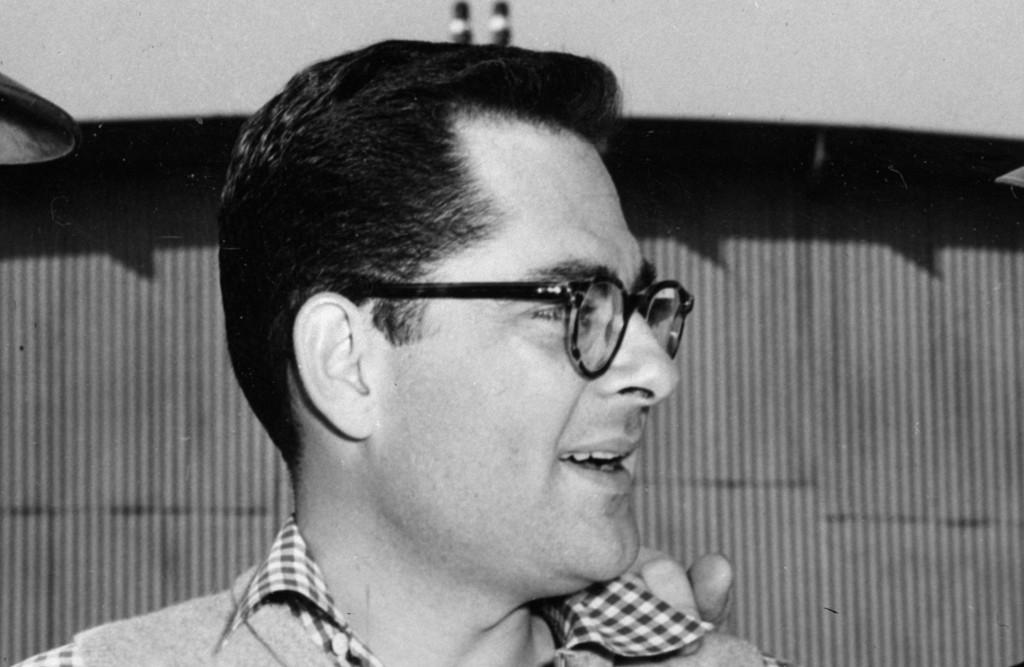
This film really has no business being as good as it is. Essentially, this is a cheapo-ripoff of the old monster movies of the 40’s. Even worse, it feels like a ripoff of a 50’s ripoff of the old 40’s horror movies, namely Columbia’s The Werewolf (1956, review), itself a surprusingly adult and creative take on the werewolf mythos. In fact, The Vampire isn’t really a vampire picture at all, but a werewolf picture. The only difference is that instead of being inflicted by lycanthropy, Paul is inflicted by chiropteranthropy, becoming a werebat, rather than a werewolf. Like in the original The Wolf Man, we have a middle-aged man struck by a malady/curse that turns him into a monster at night, going around killing people in his sleep, without having any memory of it the next day. Desperately seeking a cure, both the original movie’s Larry Talbot and Paul Beecher are painted as tragic victims of their circumstances, spending most of the movies trying to rid themselves of their curse. It can’t be a coincidence that when transformed, Beecher looks like a dishevelled, latter-day Lon Chaney, Jr. The basic plot here, thus, was as old hat as it gets, even in 1957, which contemporary reviewers weren’t slow to comment on. Even 1945, John Carradine’s Dracula in House of Dracula (review), the weakest of the Universal monster sequels, tried to cure himself of his vampirism through medicine.

But somehow, inexplicably, The Vampire feels fresh. First and foremost, praise for this fact must go to screenwriter Pat Fielder. What makes The Vampire stand out most of all, are its sympathetic, interesting and more or less realistic characters. They don’t feel like they come cut out of the rigid template of 50’s run-of-the-mill science fiction movies: square-jawed macho leading men and glamourous, devoted leading ladies with perfectly coiffed hair, recluse mad scientists bent on world domination and a small-minded, easily manipulated populace. Nor is the film populated by characters completely devoid of any personality, who seemingly exist only in order to forward the plot, as was increasingly the case in SF movies in the latter half of the 50’s. While obviously simplified and somewhat exaggerated for the sake of the plot, Pat Fielder’s characters feel like they could exist in reality: Dr. Beecher is a very normal small-town doctor, and a single parent with an adolescent daughter. His nurse, Carol Gray, is intelligent, caring and brave, and a working-class woman who seems like she exists outside of her profession, and outside of her being the love interest of the “hero”, namely sheriff Kenneth Tobey. Tobey’s sheriff doesn’t get to develop much personality, but he feels, like most of the characters, like a thinking, compassionate person. The most outrageous characters are the two visiting scientists, Beaumont and Henry. Beaumont is a lively, wise-cracking character, while Henry is a mysterious, quiet type, who talks in monosyllables and who wears sunglasses indoors because of a light sensitivity. The quality of Fielder’s writing shows in the character of Henry, who in any other films would be some sort of villain, but here turns out to be a loveable character whom the audience comes to like, and who falls prey to the monster.

In an interview with Tom Weaver, Fielder comments on the fact that many of her characters seemed like ordinary people, often with families and a life outside the plot of the movie: “horror in juxtaposition with family is always interesting. Weird people have weird experiences, but when real people have weird experiences, then I think you have a true drama.”
What really makes Dr. Beecher, and the movie, stand out, is the fact that the impact of Paul’s predicament is first and foremost mirrored in the way he hurts the people around him. His first victim is a young woman he clearly has a fond relationship with, and the most heartbreaking scene in the films is when he forces himself to send his daughter away to live with her aunt, terrified he is going to hurt her. This, and a few other scenes in which Paul struggles with the consequences of his vampirism, give the movie some real heart and weight, leading to a scene in which he tries to kill himself through a lethal injection, but is stopped by Carol, only to turn in front of her and start chasing her through the woods. According to Fielder, the idea to make the central drama about a father and his daughter came from the scene in the 1941 version of Dr. Jekyll and Mr. Hyde (review) in which Spencer Tracy’s Jekyll breaks up with his fiancée in order to protect her from himself: “The theme of a father destroying the thing he cared about most – the ultimate victim being his daughter – seemed to me a classic theme around which to build a story. It seemed to have a particular kind of horror, going back to the Greeks, to Oedipus, to Medea, all the great classics.”
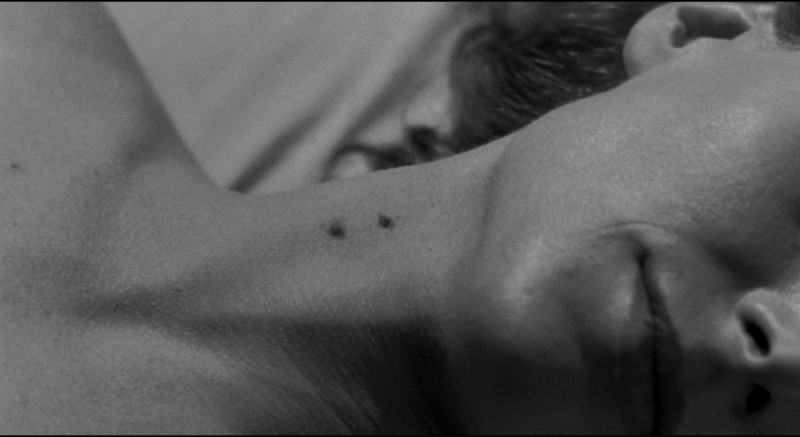
Weaver also talks to Fielder about the fact that many of her female leads were working women, often as secretaries or in other middle- or working class professions. Often they are portrayed as capable, balanced and independent, with complex personalities and emotions, or at least as complex as the B-movie framework allows. Fielder says she drew on a lot of her own experiences when writing female characters. She worked as, basically, a secretary, at Gramercy before being “promoted” to screenwriter, and strived to bring real-life women on screen, even in horror and science fiction movies, women with ambitions and lives of their own.
The Vampire was really spawned out of The Monster That Challened the World (1957), which was the main feature on the double bill with The Vampire. As Fielder tells it, Gramercy had commissioned a script from David Duncan, who had recently written the Americanised version of Rodan (1956, review), and would go on to adapt H.G. Wells’ The Time Machine (1960) for George Pal. However, the three producers didn’t like the script. Fielder was at the time not only a secretary and production manager for Gramercy, but also a script reader. At the same time, she was honing her own writing skills in an attempt to write a stage play. She tells Weaver that when Levy, Gardner and Laven scrapped Duncan’s script, they were in a crisis: they couldn’t afford to hire another writer to rewrite it, and they couldn’t film it as it was. Arthur Gardner had read the draft of the play that Fielder had written, and had enough confidence in her to let her take a crack at Duncan’s story. She said she wrote the script in around eight weeks. When it turned out well, the producers were happy to let Fielder write the companion piece.

According to Fielder, the idea for The Vampire was born out of one of Gramercy’s production meetings. She says she decided to place it in a small town, as small towns has always fascinated her, and she asked her personal doctor, himself a small-town doctor, or advice on medical details. In fact, she says, she based the main character in the film on him. A great scene in which the vampire, unseen, stalks Carol down a dark street, she says he based on the iconic scene from Val Lewton’s Cat People (1942). Towards the end of the film, the movie really picks up steam, and there is one scene leading into another where things happen all the time, and the viewer never really has a chance to catch their breath. Fielder tells Weaver this was very intentional, as she likes a story to “really take off and go, and never stop”. ‘

The movie is well directed by Paul Landres, a former editor and a reliable low and medium budget workhorse. There’s no great flair in the direction, but it is efficient, has great drive and moves forward smoothly. There are a few standout scenes, such as the afore-mentioned ones in the beginning and the one in which Beecher stalks Carol and ends up killing the elderly lady. The transformation scenes are rather crude and not particularly convincing, done with classic replacement and fade techniques. The makeup for the vampire is technically well realised by Donald Robertson, although I am not crazy about the design. Actor John Beal is made up to look more like a hobo with a skin problem than a vampire, and despite the teeth marks, he doesn’t seem to have any fangs. I sort of understand the production going for more of a “realistic” approach, in line with the “regression” theory that the film builds upon, but it makes the monster feel more like a Jekyll/Hyde character than the titular vampire. The Vampire is helped handsomely by a great, brass-heavy orchestral score by Gerald Fries, underpinning both the emotional moments and the horror and action. Some of the dissonant cues bear a resemblence to John Williams’ famous, much later, score for Jaws.
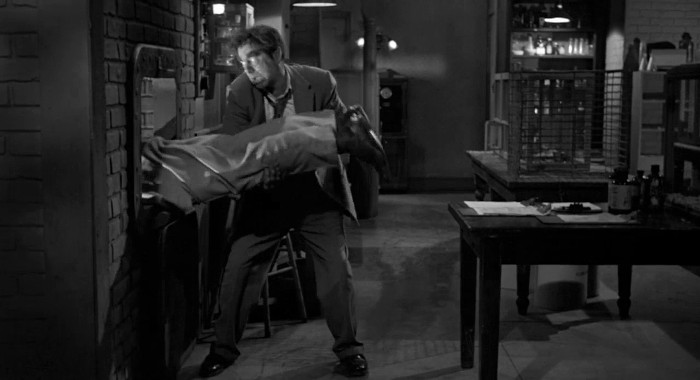
Actor John Beal carries the film on his shoulders, and seems to be giving it his all in an unusually fleshed-out B-movie role. A Broadway veteran and former minor A movie star of the 30’s, Beal has a great experience to draw on and skillfully balances the mundane-family-man repertoire with the heightened pathos required for a role like this. Beal makes the film work by turning Dr. Beecher into both a very sympathetic and tragic character. Coleen Gray turns in a steady, competent performance as Carol Butler, and her naturalistic, calm style helps elevate Beal’s performance. Kenneth Tobey is reliable, as usual, and Dabbs Greer and James Griffith really shine as the colour patches of the film, while still refraining from mugging so much that they turn into characters into charicatures. 13-year old Lydia Reed is perhaps a tad too enthusiastic, but as far as child actors in Hollywood in the 50’s go, she perfectly alright.

Despite the praise, this is no Invasion of the Body Snatchers (1956, review). It is still a programmatic B movie, which is especially apparent in the end. After adding all the nuance and interesting twists on the 40’s B movie tropes, Pat Fielder still falls into the same tired formula as all other B monster movies when it comes to the end. Without outright spoiling it, one can note that The Vampire ends in the same way as the afore-mentioned The Werewolf, and like that film, the ending is the weakest part of this film. Sure, it ties up the story neatly, but one would have hoped for a little more originality from a script that is otherwise as well written as Fielder’s. One can praise her for not forcing a happy ending upon the movie, but the abrupt finality of it all does leave a few important threads hanging (primarily since the daughter is neatly written out of the plot), and makes the whole movie feal somewhat like an excercise in futility. Another criticism is that, as so very often in these B monster movies, we are presented with romantic hero that is more or less redundant to the plot, seemingly written into the movie simply for the sake of having a romantic leading man (as the monster obviously always dies in the end, and thus can’t get the girl.
Reception & Legacy
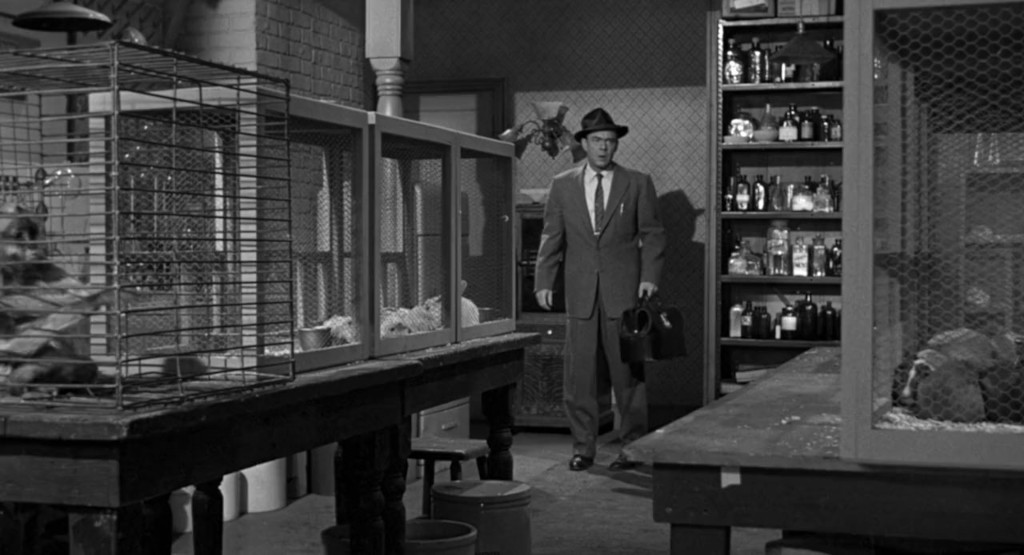
The Vampire, as stated, was released as the lower half of a doube bill with The Monster that Challenged the World. It received mixed reviews at the time. Mildred Martin at the Philadelphia Enquirer misgenders and misnames Pat Fielder as “Paul Fielder”, and notes: “No actor could look anything but silly in this sort of thing […] John Beal is, of course, the chief sufferer”. Daily News, on the other hand, said that “Performances in this production are much better than the material”. The Motion Picture Exhibitor called The Vampire “moderately successful in the horror department”, and said it “should keep interest fairly well focused on the screen, as the actors, director and producers carry on in accepted fashion”. The Motion Picture Daily also noted “good performances”. Daily Variety called the film “a good entry for the horror market”.

Today, The Vampire has a 5.8/10 audience rating on IMDb, based on 1,300 votes, and a 3.0/5 rating on Letterboxd, based on 700 votes. The film continues to divide critics today. AllMovie gives it 2/5 stars, with Hans J. Wollstein calling it a “terrible, and terribly boring, would-be horror flick”. TV Guide calles it an “offensive horror movie without a single shudder to be found”. Richard Scheib at Moria opines that the movie is “visually and directorially dull” and gives it 2/5 stars.
On the other hand, in Fangoria, Tom Weaver called it “one of the best independent horror films of the 1950s”. Michael Toole and Jeff Stafford on Turner Classic Movies praised the film, noting it is often “unfairly lumped with other grade-B horror flicks from its era”. Derek Winnert says the film is “an amusing 50s sci-fi horror that, even if it fails to frighten and sometimes raises unwanted laughs, still has many good scenes, well-written dialogue by Pat Fielder, a strong central performance from Beal, and jolly character acting from old reliables”. Dave Sindelar at Fantastic Movie Musings and Ramblings writes: “I ended up really liking this movie; I think it’s very effective, largely because it fleshes out and differentiates the various interesting characters, and the whole thing is quite well acted”. Finally, Jon Davidson at Midnight Reviews matches my 7/10 rating, writing: “Presenting a then unique, original take on vampire fiction, this film will appeal to creature feature buffs and science fiction fans alike. The Vampire is, however, hampered by the typical shortcomings of a low-budget horror production.”
Cast & Crew

Outside of his horror/SF work for Gramercy, director Paul Landres doesn’t have a particularly exceptional resumé. Landres started his Hollywood career as an editor of B movies, before graduating to directing similar B movies in the late 40’s. In the early 50’s, he started earning his bread and butter as a TV director. In 1957-1958, he directed three of Gramercy’s four horror/SF movies, The Vampire (1957), The Flame Barrier (1958) and The Return of Dracula (1958).
Pat Fielder was probably the first American woman to specialise in science fiction scripts for the movies, even if she was not the first woman in Hollywood to dabble in the field. According to an interview with Tom Weaver, she was not inherently an SF fan, but had seen a few movies over the years, and caught up with a few of the more famous ones as she started writing the script for The Monster That Challenged the World (1957). She says she was very interested in science, and tried to read up on the science of her scripts as best she could.

Born in Pasadena, California, in 1929 as Patricia Penny, she studied theatre arts at UCLA, before getting signed on as a typist and all-round assistant at Gramercy, for the movie Vice Squad in 1952. To Weaver, Fielder says Gramercy closed shop for a while after that, and she worked a couple of years in a “secretarial capacity” for other companies, before getting called in again by Gramercy’s three producers, Jules Levy, Arthur Gardner and Arnold Laven, for the production of The Monster That Challenged the World: “I told them I wanted to be more than a mere secretary, and had ambitions to be involved in production and to write one day”. Said and done, Fielder became a production assistant, and after David Duncan’s script for the film failed to impress the producers, she became a screenwriter. The producers were impressed enough with Fielder’s work on the two first films, that they asked her to write two more SF/horror films, which were also distributed by United Artists in 1958, The Flame Barrier, which is generally considered the worst of the four, and The Return of Dracula, conversely considered the best. Fielder tells Weaver she enjoyed working at Gramercy, later Levy-Gardner-Laven, or L-G-L, immensely. Levy and Gardner had a background in writing and script supervision, and would help her out when she was stuck. She describes L-G-L as a family affair, with a tight-knit team where everyone collaborated and chipped in. As stated, she also worked as a production assistant on all four movies. Fielder also became a promoter of the movies, as United Artists found an exploitation angle in the fact that a pretty, young woman had written these grisly stories.
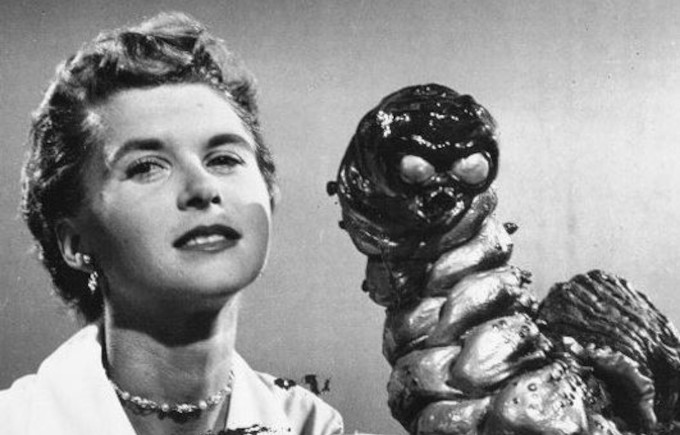
After her four films for Gramercy, Fielder embarked on a successful career as TV writer, but returned to the then re-christened L-G-L in 1962, writing Geronimo, for which she is best remembered outside of her horror/SF films. She never became a staff writer on any particular series, but wrote several episodes of the L-G-L-produced The Rifleman (1959-1962) and Baretta (1972). A well-regarded writer for hire, she contributed to a large number of popular TV shows, including such “girl power” shows as Police Woman and Charlie’s Angels. Her last assignment was as a writer/producer for the SF mini series Goliath Awaits in 1981.

Jules Levy, Arthur Gardner and Arnold Laven first met while serving with the First Motion Picture Unit of the US Air Force during WWII. The trio got along well and decided to form a production company when they got discharged. Laven and Levy were barely in their 20s, while Gardner, 12 years their senior, had began his movie career as a child actor as early as 1929, and had worked as an assistant director in the early 40’s. However, after the war all three made their way independently in Hollywood, Gardner as an occasional actor and production assistant, Levy and Laven as script supervisors. Finally, in 1951, Gramercy Pictures/L-G-L saw the light of day. After a bit of a rocky start, the company hit its stride with its four horror/SF films made for United Artists. Under the moniker Levy-Gardner-Levy, the three friends produced four TV shows and around two dozen films between 1952 and 1982. Best known are perhaps the hit series The Rifleman (1958-1963) and The Big Valley (1965-1969), and the films Geronimo (1962), the roller derby movie Kansas City Bomber (1972), starring Raquel Welch, the John Wayne neo-noir McQ (1974), the Burt Reynolds vehicles White Lightning (1973) and Gator (1976) and the action comedy Safari 3000 (1982), starring David Carradine, Stockard Channing and Christopher Lee. However, the three also worked on a number of other projects, sometimes together, sometimes on their own. For example, Gardner & Levy produced the John Wayne movie Brannigan (1975) and Jules Levy produced, alongside Mort Engelbert, the hugely popular Smokey and the Bandit (1977). Laven, on his part, struck out as a director, and directed a good number of B movies, but got his largest successes directing for the small screen, shows like Alfred Hitchcock Presents, Gunsmoke, The Rifleman, Mannix, Ironside, Planet of the Apes, The Six Million Dollar man, Hill Street Blues and The A-Team.

The Vampire is not filled by the usual suspects of almost-leading-men actors on the way down in their careers, but rather of an impressive roster of theatrical professionals and respected character actors — few, however, with much SF pedigree — with a few exceptions. Throughout his career, John Beal put his celebrated stage work before his movie career, even if he had a string of leading man roles in a number of prestige dramas in 30’s, interrupted, however, by serving in WWII. Post-war, he dividi his time between stage, film and TV.

Born to Danish parents as Coleen Jensen, Coleen Gray made a minor splash in the late 40’s with a handful of lead parts in MGM dramas, however, she was let go by the studio, and soldiered on in a long and fairly successful career in smaller films. She went on to play leads in The Leech Woman (1960) and The Phantom Planet (1961). Kenneth Tobey, of course, was by this time a veteran of the SF scene, having appeared in The Thing from Another World, (1951, review), The Beast from 20,000 Fathoms (1963, review) and It Came from Beneath the Sea (1955, review). With The Vampire (1957) he made his bow from the genre on the big screen, but had guest spots in a handful of SF TV series in the 70’s and 80’s. With the popularity revival of the 50’s SF movie in the 80’s, he agreed to cameos in Innerspace (1987), Honey, I Blew Up the Kids (1992), and had a cameo as the elder Rurigan in the Star Trek: Deep Space Nine episode “Shadowplay” in 1994. He also appeared in Hellraiser: Bloodline (1996) and posthumously in the belated release of the spoof The Naked Monster (2005).

Brilliant character actor Dabbs Greer has a larger-than-ususal role in The Vampire, as Dr. Beaumont. Greer was often stuffed away in small but memorable roles. He appeared in Invasion of the Body Snatchers (1956, review), The Vampire (1957) and It! The Terror from Beyond Space (1958). He finally became a household name in 1974, when he was cast in the recurring role of Rev. Robert Alden in the TV show Little House on the Prairie.

James Griffith (Henry) worked as an aircraft mechanic, a gas station attendant, and as Spike Jones’ saxophone player before finally breaking into Hollywood in the late 40’s, often portraying heavies and villains. Despite a long career with over 230 IMDb credits, he appeared in only two SF movies: The Vampire (1957) and The Amazing Transparent Man (1960). Child actress Lydia Reed was already a pro in 1957, after having appeared in over 300 episodes of the daytime soap opera Valiant Lady in 1953-1954. The Vampire was the last of her around a half dozen films, but she went on to real fame in 1957, when she was cast as Hassie McCoy in The Real McCoys, a role she played for five years before dropping out of acting.

Composer Gerald Fried was nominated for an Oscar, six Emmys and won one Emmy, for his work with Quincy Jones Roots (1977). An oboist and composer, he moved to Hollywood in the early 50’s, invited by Stanley Kubrick. Fried scored Kubrick’s first five films, including his breakthrough, Paths of Glory (1957). Apart from his work with Kubrick and on Roots, Fried is probably best known for composing music for Star Trek, in particular the percussion and brass heavy “The Ritual/Ancient Battle/2nd Kroykah”, for the scene in the episode “Amok Time” (1967) in which Spock and Kirk engage in a deadly duel. The piece, often dubbed “Star Trek Fight Music”, has been reused in several episodes and TV films. Fried kept composing almost up until his death in February 2023.
Janne Wass
The Vampire. 1957, USA. Directed by Paul Landres. Written by Pat Fielder. Starring: John Beal, Coleen Gray, Kenneth Tobey, Lydia Reed, Dabbs Greer, James Griffith, Herb Vigran, Paul Brinegar, Ann Staunton. Music: Gerald Fried. Cinematography: Jack McKenzie. Editing: John Faure. Art direction: James Dowell Vance. Makeup: Donald Robertson. Produced by Jules Levy, Arthur Gardner & Arnold Laven for Gramercy & United Artists.

Leave a comment